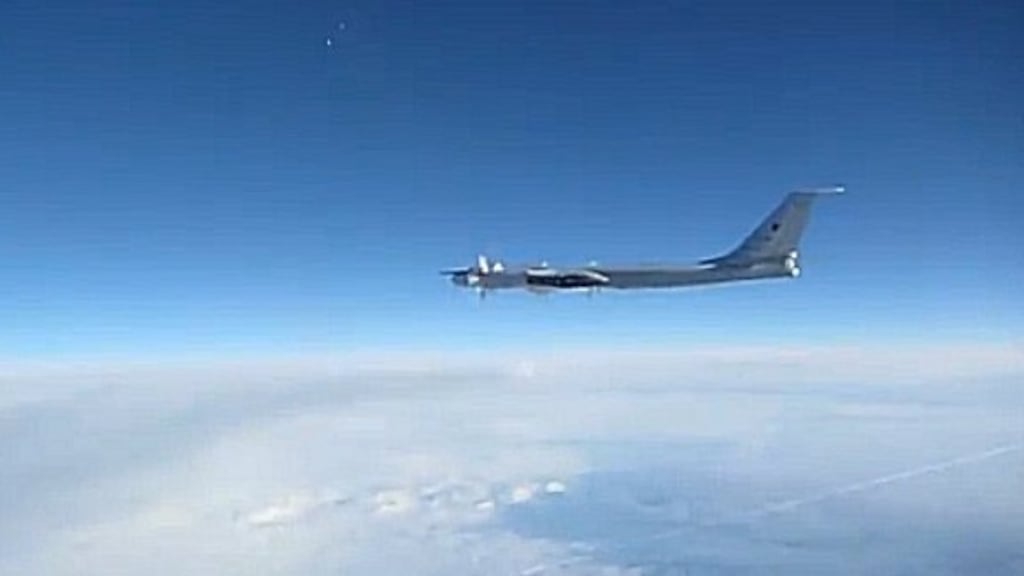Two unidentified military aircraft entered Irish airspace on Saturday when British RAF fighters scrambled to intercept Russian bombers off the northwest coast of Ireland, aviation authorities have confirmed.
The Russian aircraft were identified as Tupolev TU-95 “Bear” bombers, which are also deployed as long-range maritime patrol planes. It is unclear how many comprised the formation.
In response to the incursion six Typhoons launched from RAF Lossiemouth in northeast Scotland, and RAF Coningsby, in eastern England, and headed towards Derry and Donegal to intercept .
Cockpit footage from one of our #QRA Typhoons, showing one of the Russian aircraft #TeamLossie intercepted yesterday.
— RAF Lossiemouth (@RAFLossiemouth) March 8, 2020
It truly was a team effort, both within the @RoyalAirForce and as part of @NATO.
Find out more ▶️ https://t.co/HDou9Ziq1F pic.twitter.com/FPe20PJo1F
The RAF fighters were launched “early in the morning” and again in “mid-afternoon”, according to a Ministry of Defence (MoD) spokeswoman.
After making contact four Typhoons closed on the Russian aircraft before withdrawing, while another two forced them to alter course.
Quick-reaction aircraft from Nato allies Norway and France were also involved.
The Irish Aviation Authority (IAA) confirmed two “unidentified” military aircraft entered Irish airspace during the incident.
“All aircraft entering Irish controlled airspace are monitored and tracked from an operational point of view and also for reasons of safety,” an authority spokesman told The Irish Times.
“The IAA is aware of two unidentified military aircraft tracking through north Atlantic airspace for a period on Saturday afternoon, March 7th. Once the aircraft appeared on our systems . . . the IAA monitored [them] until they left Irish airspace.”
The spokesman could not immediately clarify if Irish airspace referred to sovereign airspace or a wider Irish-controlled area in the north Atlantic. Details of the operation remained unconfirmed during Saturday until the RAF fighters returned to base.
Both RAF Coningsby and Lossiemouth are the United Kingdom’s two designated quick-reaction-alert stations that protect UK airspace.
An airforce spokeswoman later characterised the interception as a “routine response to Russian aircraft approaching UK air space and co-ordinated with several other Nato allies”. She said the Russian aircraft were prevented from entering British airspace north of Ireland.
RAF Lossiemouth tweeted that the Russian aircraft at no point entered “UK sovereign airspace” but had “entered the [country’s] area of interest”.
After a similar incident when Typhoons scrambled twice in one day last August – before the UK left the European Union – in response to Russian Bear bombers approaching British airspace, the MoD said Russian aircraft “frequently attempt to test Nato’s level of readiness” as well as conduct “intelligence-gathering missions”.







